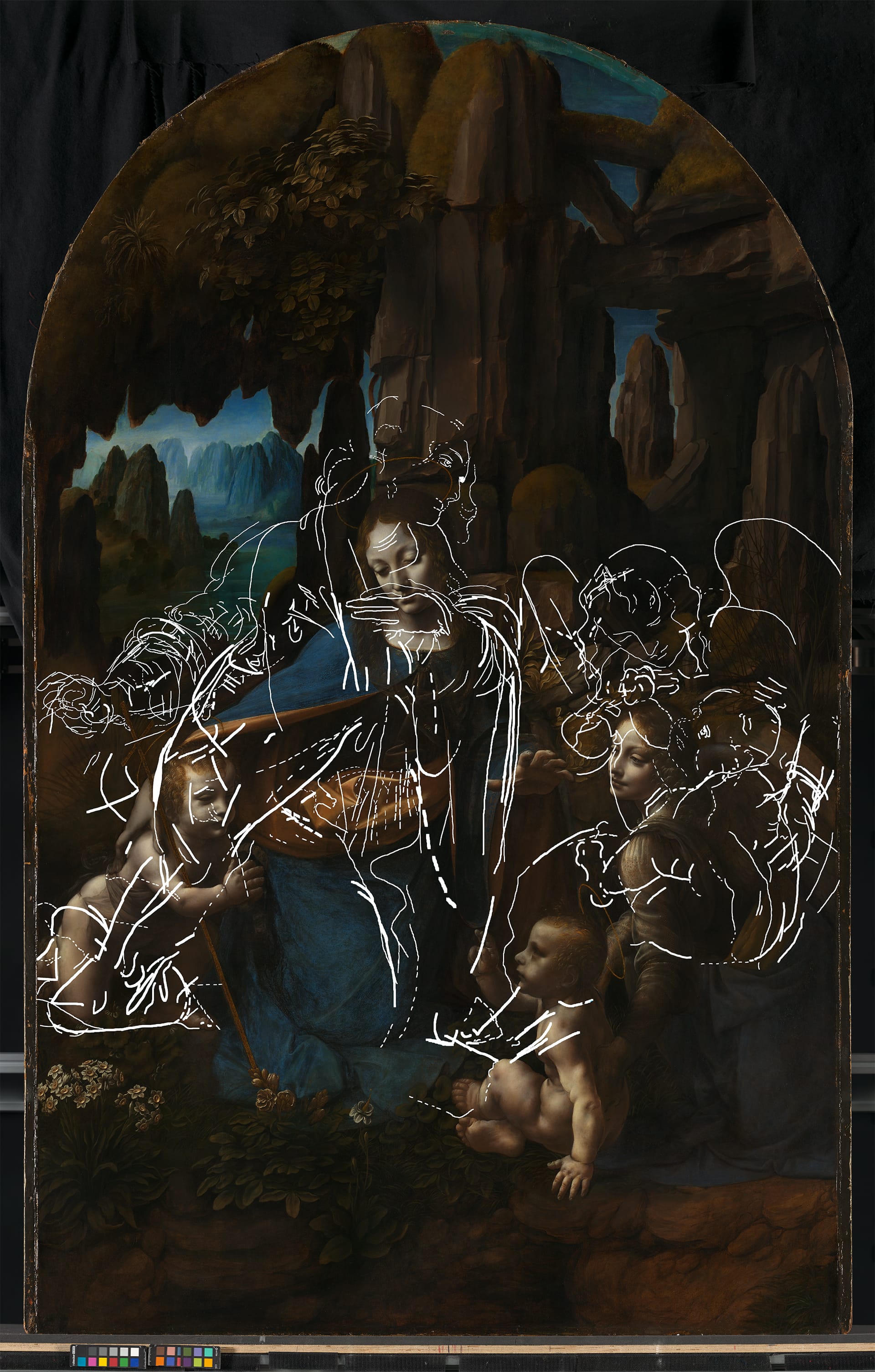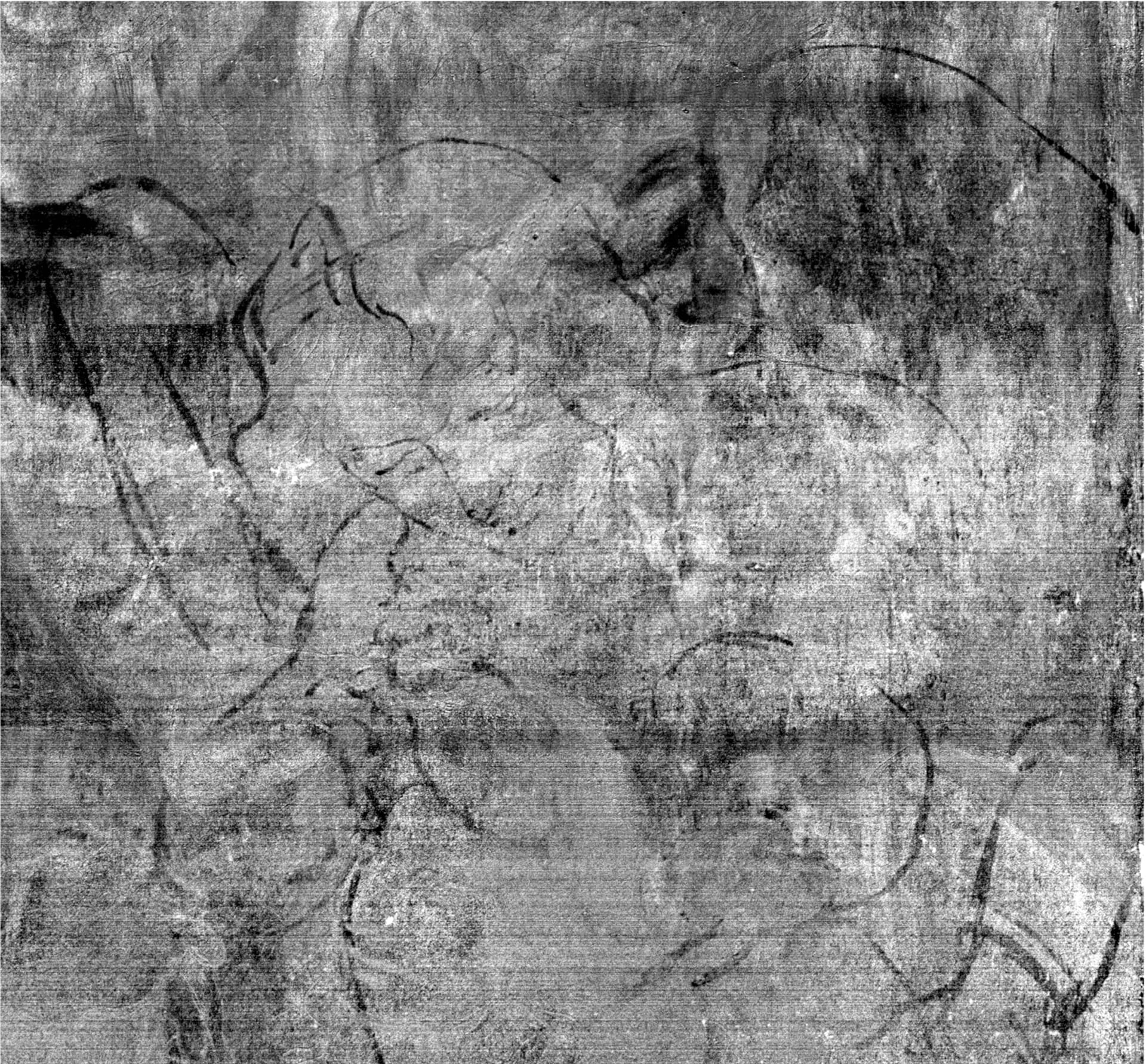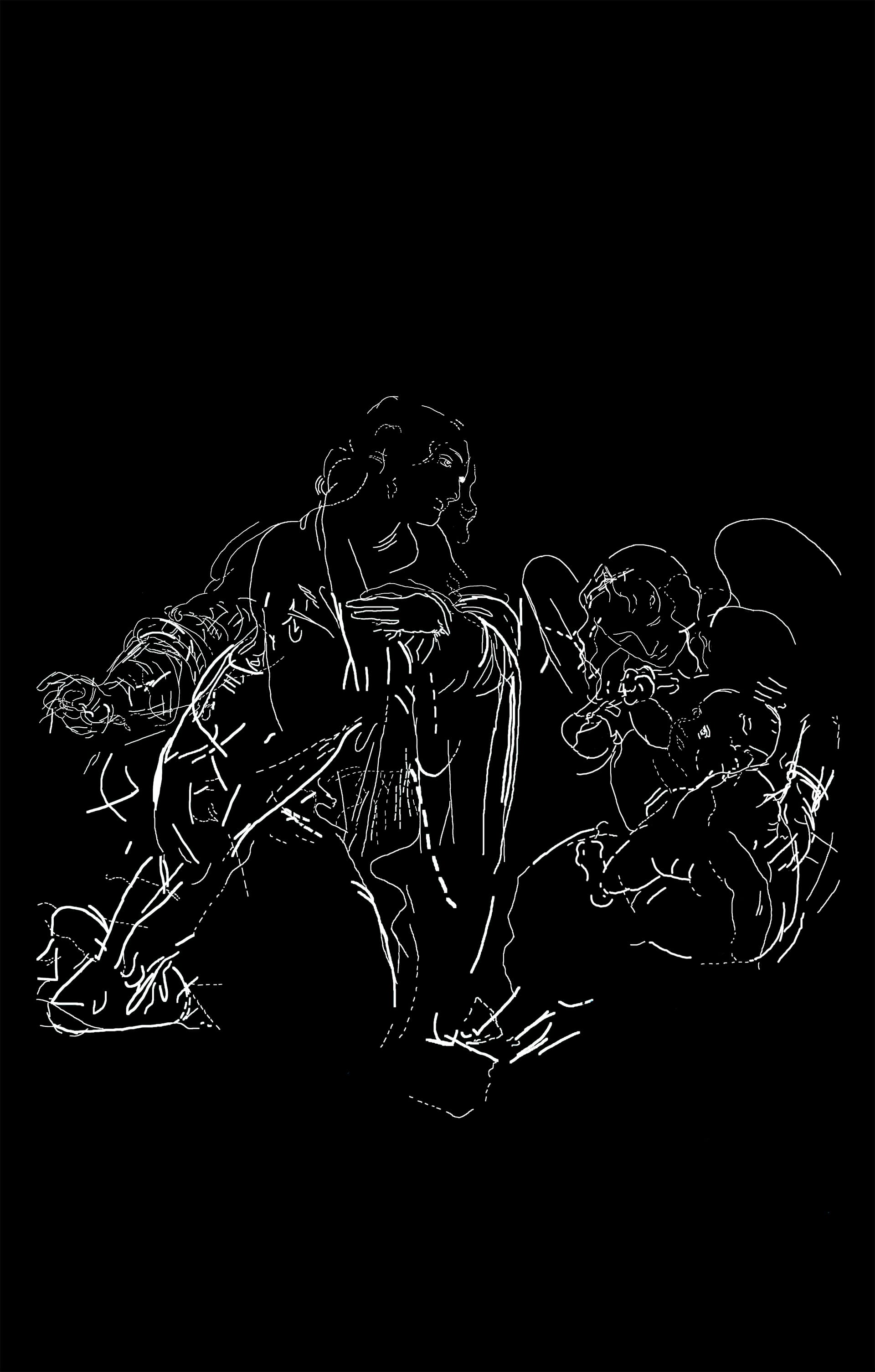The Hidden Secrets of Leonardo da Vinci's "Virgin of the Rocks"
Advanced imaging techniques have revealed Leonardo's original design to be vastly different from the final product.

A deep dive into Leonardo da Vinci’s “The Virgin of the Rocks” (ca. 1491/2-9 and 1506-8) has revealed unexpected images of now-hidden drawings lying underneath its surface.
15 years ago, it was revealed that the Virgin Mary’s pose had been changed during Leonardo’s process of completing the work. However, this month, London’s National Gallery announced the findings of its even closer look into the famous artwork, depicting a haloed Virgin Mary with an infant Saint John the Baptist and Jesus Christ.

Using advanced techniques including infrared and hyperspectral imaging, they were able to reveal Leonardo’s original design, which is vastly different than the final product. In the initial sketch, an angel wraps an infant Jesus Christ tightly in her arms, while she and Mary gaze at him lovingly from a distance. The findings were made possible because of the presence of zinc in the drawing material, which was made visible in the macro x-ray fluorescence (MA-XRF) maps revealing its outline. Leonardo’s motivation to rework the canvas is still unclear to researchers.

“By its very nature, much of the research we do at the National Gallery takes place in closed studios, laboratories and libraries,” said Dr. Caroline Campbell, Director of Collections and Research. “This is an exciting opportunity to not only share our innovative findings, but also to invite the public to explore and engage with what we have found.”

Organizations worldwide are celebrating the 500th anniversary of the polymath’s death. National Gallery is opening an immersive exhibition, Leonardo: Experience a Masterpiece, on November 9, 2019.





